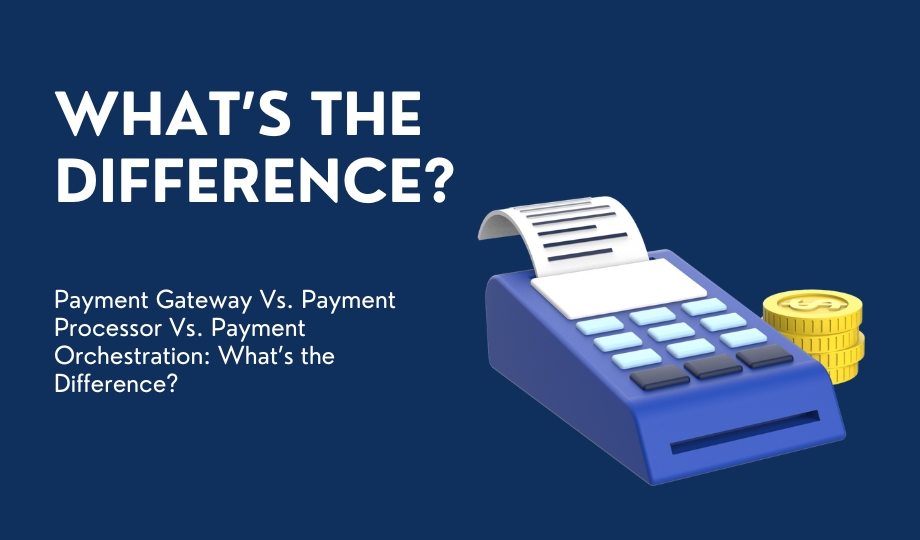In the world of online payments, there are three essential players: payment gateways, payment processors, and payment orchestrators. Each serves a unique role in facilitating online transactions, and understanding their differences is crucial for businesses. Let’s explore what sets these components apart.
Payment Gateway: The Secure Entry Point
A payment gateway is a technology that empowers merchants to accept payments from online customers securely. Its primary functions include data encryption, message transmission (success or decline), and acting as a fraud prevention tool. Here’s how it works:
Purchase: A customer selects a product or service and adds it to their cart.
Initiation: The customer chooses a payment method and enters payment information.
Submission: After entering the payment details, the gateway encrypts the data and forwards it to the respective payment processor for authorization.
Authorization: If all checks out, the merchant informs the customer, and the product is shipped. If the payment is declined, the customer receives a “declined” message, prompting them to try alternative payment methods.
Settlement: In case of a successful payment, funds are transferred from the issuer’s account to the acquirer’s account, finalizing the payment.
Payment Processor: The Transaction Facilitator
A payment processor acts as an intermediary between various parties involved in a transaction, including the merchant, acquiring bank, and issuing bank. While the payment gateway accepts payments, the payment processor facilitates the movement of funds from the customer to the merchant’s account:
Transmission of Data: After the customer enters payment information, the payment gateway encrypts and sends it to the payment processor.
Authorization: The payment processor connects to the issuing bank through card networks to authorize the transaction, receiving a response from the issuer.
Response: The processor sends the “approved” or “declined” response to the payment gateway, which displays it to the customer.
Transfer of Funds: In case of approval, the processor finalizes the transaction with the issuer and initiates the funds transfer to the acquirer’s bank.
Settlement: Funds are settled to the customer’s account based on the payment service provider’s cycle, completing the payment cycle.
Payment Orchestration: The All-in-One Solution
A payment orchestrator, on the other hand, is a comprehensive software layer or platform that offers payment gateway and processor services and much more. It streamlines the entire payment process from start to finish, encompassing authorization, routing, and settlement. Key features of payment orchestration include:
Integration of Multiple Providers: Payment orchestrators consolidate multiple acquirers, banks, and payment service providers into a single software layer, creating a flexible and efficient payment stack.
Expanded Payment Methods: They enable businesses to offer a wide range of payment methods, improving customer convenience.
Routing Flexibility: Payment orchestrators allow for transaction routing through the most optimal gateway, enhancing reliability.
Transparency in Upcoming Settlements: Merchants can monitor upcoming settlements, facilitating better expense planning.
Automated Tasks: They automate processes like payment reconciliation, invoicing, and offer analytical reports for data-driven decision-making.
Differentiating Factors and Use Cases The key differentiation lies in their roles:
Payment Gateway: Accepts online and offline payments securely.
Payment Processor: Acts as an intermediary facilitating payment transactions.
Payment Orchestrator: Consolidates payment services and offers end-to-end payment solutions along with advanced functionalities.
Use cases depend on business needs. While a payment gateway and processor are essential for most businesses, payment orchestration comes into play when:
Multiple payment gateways are required to cater to diverse customer preferences.
Multiple payment gateways are required to cater to diverse customer preferences.
Recurring payments or subscription services are offered.
Advanced functionalities like data analytics, fraud detection, and automated billing are desired.
Streamlining the payments ecosystem and enhancing the customer experience are priorities.
Cost savings and competitive advantages are sought.
Industry Trends and Future Outlook
Emerging trends in the payments industry include the rise of alternative payment methods, contactless payments, AI and ML-based fraud prevention, real-time payments, open banking initiatives, and personalized checkout experiences. Merchants must keep up with these trends to remain competitive.
Wrapping Up
Payment gateways, processors, and orchestrators each play vital roles in facilitating online transactions. By understanding their differences and evaluating business needs, merchants can choose the right solution to enhance customer experiences and drive business growth. So, analyze your requirements, integrate the best-suited solution, and propel your business to new heights!

